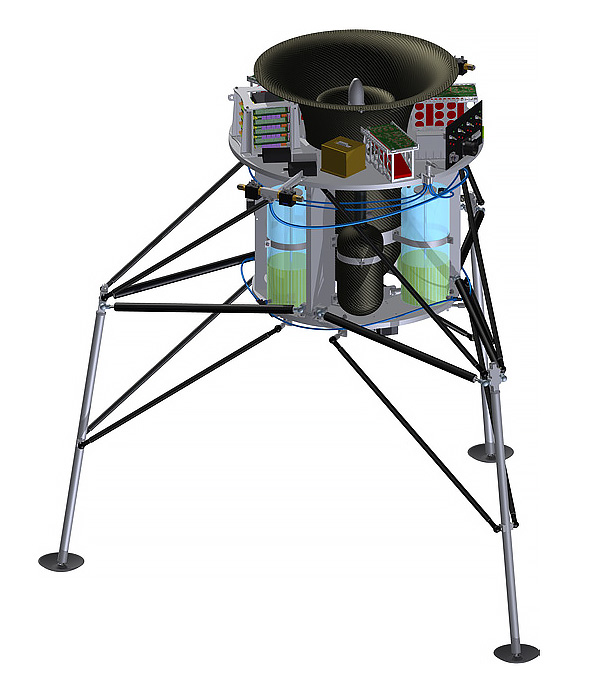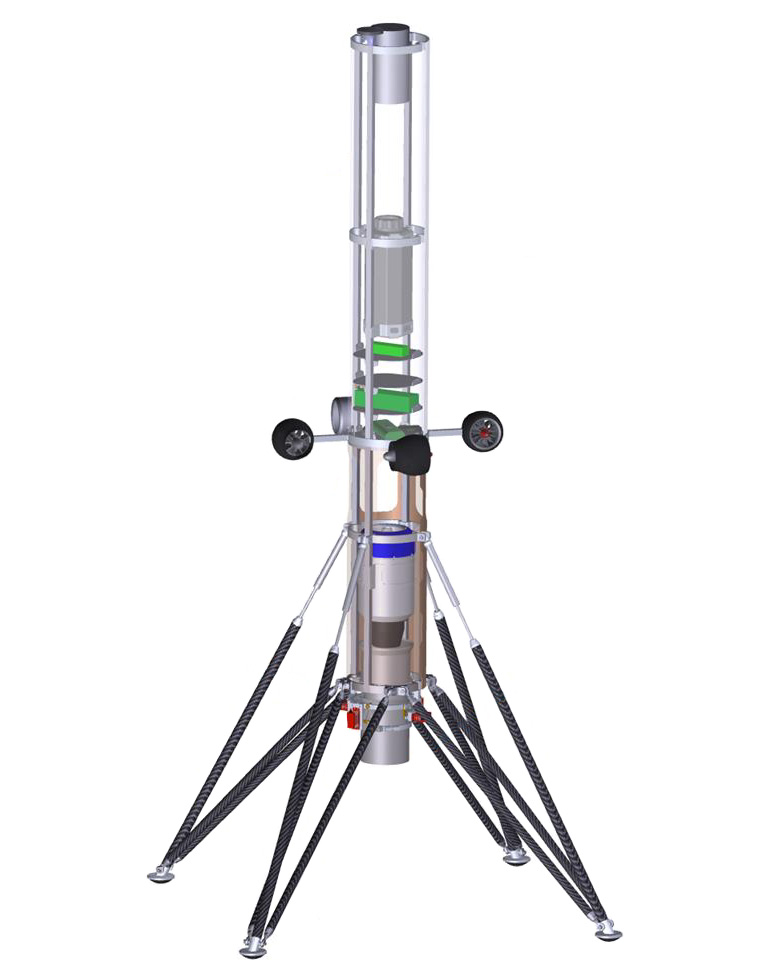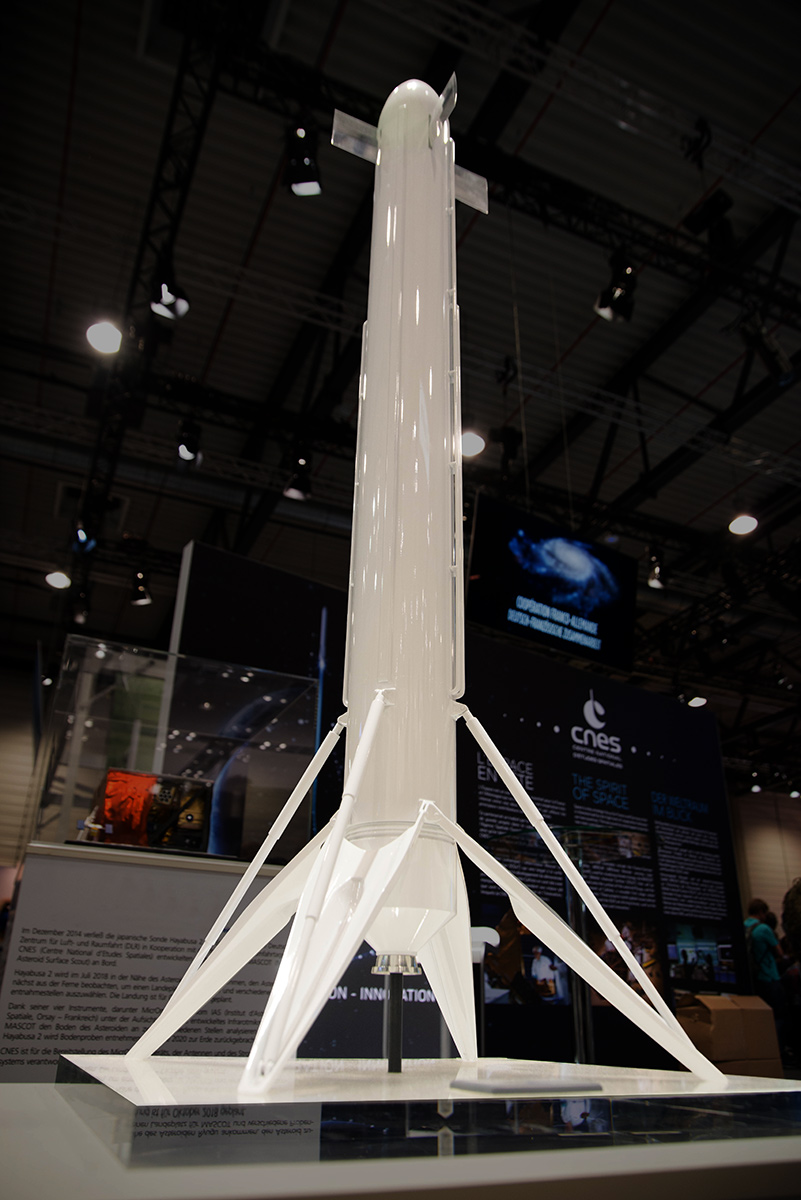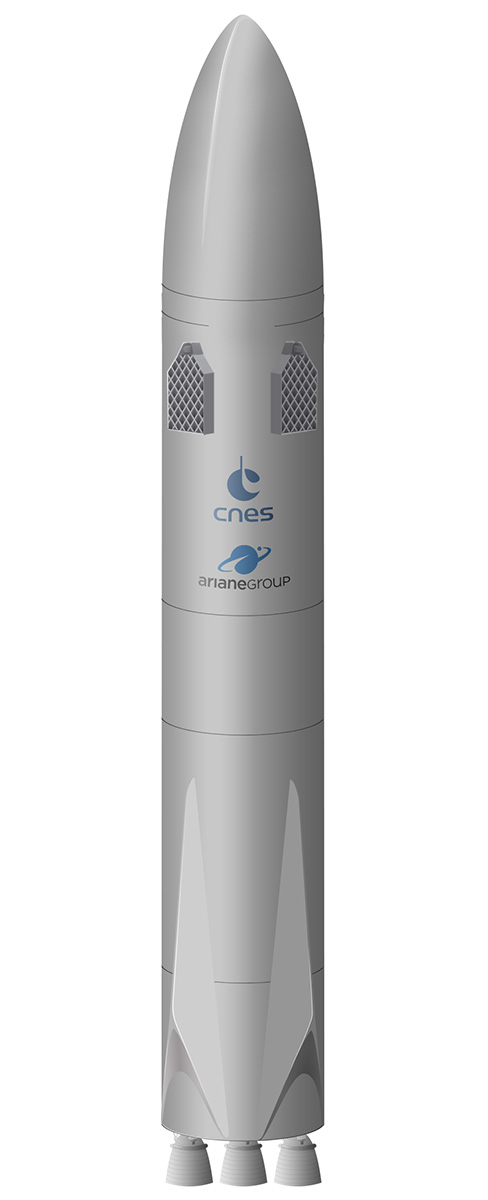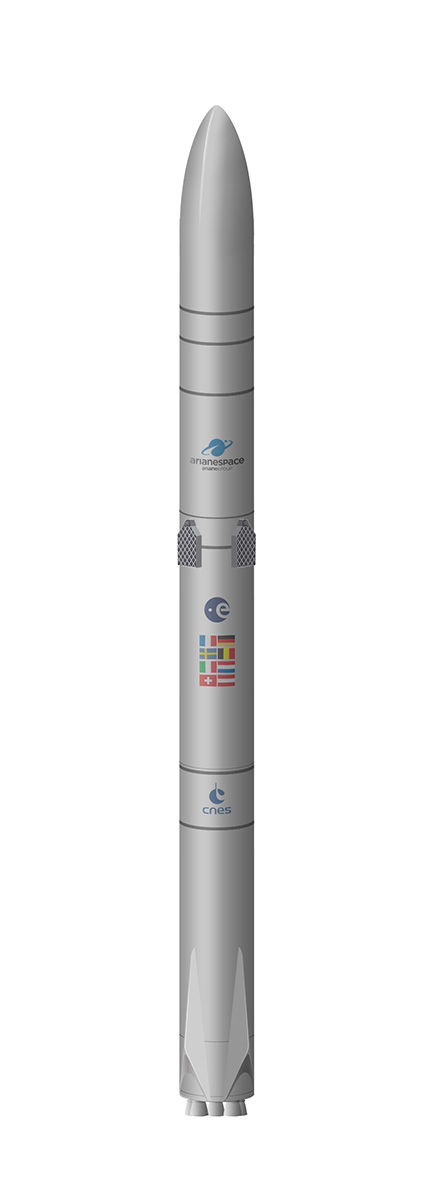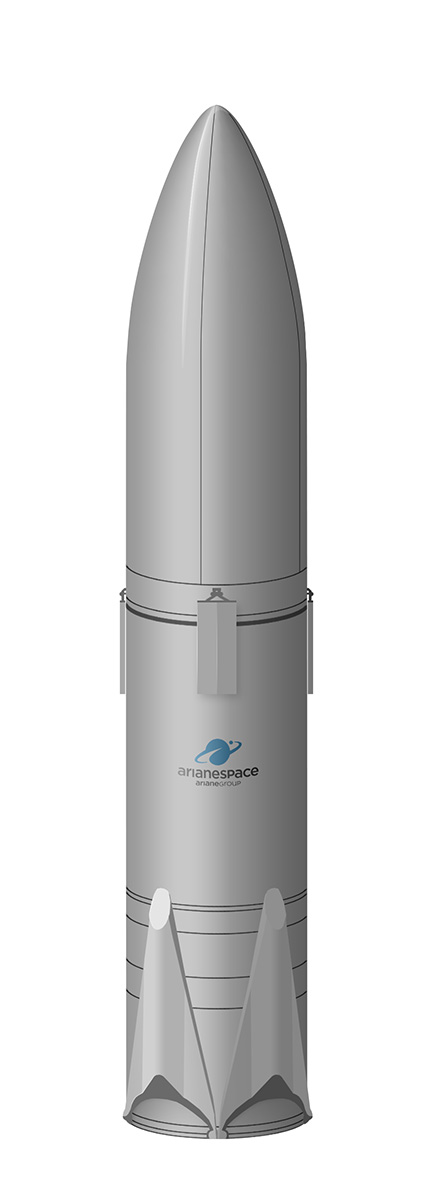In this episode of our series, we’ll dig into how the French Space Agency (CNES) plans to adopt reusable launch vehicles, or more precisely: What’s their pathway towards successor of the Ariane 6, the Ariane NEXT.
Much like in a case of DLR, due to lack of experience in the European Space Sector with the Reusable Launch Vehicles, it’s necessary to proceed in steps that will allow mastering all the aspects necessary to make the successful landing, though unlike their german counterparts – CNES has focused on VTVL (Vertical Take-off, Vertical Landing), and this of course brought the questions about why those deisngs look like the rockets of both: SpaceX and Blue Origin. There is a good reason for that. As one of the CNES engineers have said: ‘Jetliners from Boeing and Airbus are nearly identical, ultimately designs with similar requirements will converge to the similar designs’. Therefore it’s no surprise that pretty much all of the heavy VTVL launchers look very, very similar to the Falcon 9, regardless if they are Chinese, American or European. But if you are interested in a very different approach – check our previous episode on the German pathway towards Reusable Launch Vehicles, dominated by the VTHL designs!
EAGLE
EAGLE (Environment for Autonomous GNC Landing Experiments) is a German Space Agency’s research platform for testing GNC (Guidance, Navigation, and Control) algorithms that will contribute to the larger Callisto. It’s a small craft, only 30kg wet mass, oriented at the frequent flights and accessibility to the external developers. The platform took the maiden flight in 2017 and continues its service, being open to 3rd parties for development of their systems.
| Maiden flight | 2017 |
| Height | 2.7m |
| Mass | 30kg |
| Apogee | 2m |
FROG
FROG (FROG, a ROcket for GNC demonstrations) is a wide collaborative project lead by CNES in cooperation with Polyvionics, Drones-Center, Sonatronic, Planète Sciences, and Cachan Institute of Technology. Its goal is to demonstrate both: technologies needed for Callisto and agile approach to aerospace projects. FROG was designed to fly often, fly cheap, and enable teams to fail often (a large part as for why flights thus far were done with the demonstrator hanging on wires from a gantry and why it’s built using commercial parts). Tests thus far were successful and the team gets ready for flights with the FROG-H.
| Maiden flight | June 2019 |
| Height | 2.5m |
| Diameter | 0.3m |
| Mass | 22kg |
| Apogee | 2m in captive, sub-1km in freeflight |
There are three versions of FROG:
- Pi-FROG – (Plateforme Intermédiaire) was a sub-scale indoor free-flying prototype for the FROG-T that used electric ducted fan instead of a turbojet engine. It used the avionics and software as the FROG-T. A number of flights were completed since autumn 2018 till its retirement in early 2019.
- FROG-T – (Turboréacteur) is the primary version of the testbed that sees the largest number of flight hours and is the one described in this section. Test flights conducted at Brétigny-sur-Orge Air Base since May 2019, in October 2019 it successfully flew with the winds exceeding 50km/h.
- FROG-H – (H₂O₂) will feature a gimballed monopropellant rocket engine (using HPT as a propellant). It will offer a much higher thrust and a faster response time to the GNC commands. The first flight is planned before the end of 2020.
Callisto
Callisto (Cooperative Action Leading to Launcher Innovation in Stage Toss-back Operations) is a joint project between DLR, CNES, and JAXA demonstrating Europan capability in the VTVL boosters. JAXA will provide a reusable 40kN-class LOx/LH₂ engine.
Unlike other similar demonstrators or suborbital rockets, Callisto will perform flights with down-range recovery, featuring a more demanding flight envelope. In total at least 5 flights are planned from the French Guiana sounding rocket site. Each will incrementally introduce additional risks. For the final flight a landing on a barge (Falcon 9-style) is under consideration.
Callisto has received an official production approval on 16 December 2019 during the 361st Session of CNES’s Board of Directors and it will make its maiden flight in 2022.
| Maiden flight | H1 2022 |
| Height | 13.5m |
| Diameter | 1.1m |
| Lift-off Mass | 3,6t |
| Apogee | 40km |
THEMIS
Themis is a joint project between CNES and ArianeGroup (and its ArianeWorks division) along with additional partners (ONERA, APCO Technologies SA, ADF-LATESYS, RUAG, SABCA, and several startups) is working towards a demonstration of a first stage of the reusable VTVL.
| Maiden flight | 2023 |
| Height | 30m |
| Diameter | 3.5m |
| Lift-off Mass | 150t |
| Apogee | >100km |
A number of development stages are planned:
- T0 – Structural and modular demonstration and testing – the first components are already completed and tests are about to begin at Vernon, France.
- T1 – Fully assembled demonstrator, to be tested in 2021-2022
- T1G – (Ground) testbed for the ground operations with Prometheus engine integrated midterm during the tests. Those will be conducted at the LC-3 pad of the Esrange Space Center in Kiruna, Sweden.
- T1H – (Hop) Flying stage of flights. It will perform low-altitude flight, landing, and ground effects. Planned for 2022. Tests will continue at Kiruna
- T3 – (or THEMIS-3) A triple-engined variant built to test the full flight envelope of a reusable first stage, including at least Mach 6 reentry from >100km altitude. Launches will conduct from the Ensemble de lancement Diamant at the Guiana Space Centre, most likely in 2025. This is the configuration pictured left.
Currently additional tests for the T3 are considered, but ArianeWorks has also proposed re-using the design after the initial test campaign as a platform for microgravity experiments (similarly to the Blue Origin New Shepherd, offering up to several minutes of 0g), but also as a base for the Microlaunch Vehicle, aiming at either 200, 500 or 1000kg to the SSO 500km orbit.
At the time of writing this article the fuel tank for THEMIS is completed and about to be mounted for structural testing at Vernon in the coming days, while modifications of the LC-3 are well underway since the second half of 2019.
ArianeNEXT
The successor to the Ariane 6 is planned by CNES to be the first European heavy reusable launch vehicle. Unlike the design of Ariane 5, which was largely motivated by institutional needs, ArianeNEXT is designed primarily with the commercial market in mind, though without sacrificing the requirements for Europe’s independent access to space. The launcher is being designed with a number of scenarios in mind, including the shrinkage in the number of open competitive commercial contracts on the market, as it has happened during the last years despite the decrease in launch costs.
Currently a number of configurations is under study:
- Ariane Next C600-C126 – (pictured left) Reusable main stage with 9 Prometheus engines, an expendable upper stage with 1 Prometheus (vacuum-optimized nozzle)
- 4.5t to GTO 800 m/s with main stage landing down-range,
- 5.4m main stage diameter,
- >760t gross lift-off weight.
- Ariane Next C450-C103 – Multi-configuration setup: reusable main stage with 7 Prometheus engines + an expendable upper stage with 1 Prometheus (vacuum-optimized nozzle)
or an expandable main stage with either 0, 2, or 4 boosters (each utilizing 1 Prometheus), Prometheus-based upper stage.- 4.1t to SSO 800 km reusable,
8.3t to GTO 500 m/s in the expandable configuration with four liquid boosters. - 4.6m main stage diameter,
- >580t gross lift-off weight.
- 4.1t to SSO 800 km reusable,
- [Unnamed] Tri-core – Similar configuration to the C600-C126, only with added 2 recoverable boosters.
- [Unnamed] Hydrogen – Similar configuration to the C600-C126, only using LOX/LH2 as a propellant, with a modified version of Prometheus.
ArianeNEXT is planned for an introduction after 2028, though more realistically goals put it at the horizon of 2030, at the price of $5000/kg to GTO, which is roughly half of the current SpaceX prices. The team behind the designs expects a decision of the full-scale development to be made in the early 2025.
Ariane Ultimate
While Ariane NEXT is at the early design stages, CNES is already looking towards the second generation of the reusable launchers. And it’s a world of innovations!
Keep in mind here that this is on such an early stage that everything is a subject of change, it’s more in a category of the dreams of the engineers than something with cemented foundations.
The concept for the Ariane Ultimate, pictured left, is a fully reusable Single Stage To Orbit, including an integrated fairing, a very high percentage of the 3D printed components, and hugely simplified ground operations, to the point where it can take off from a basic flat landing pad. Some ideas presented even include exotic, high-performance fuels, such as polymeric nitrogen.
Currently, it’s a topic researched for the post-2040s timeline, fostering many developments along the way aimed at reducing costs and increasing flexibility of not just the launcher, but the supporting ground infrastructure and the industry behind it all.
Hope you’ve enjoyed this part of the series! As always: We encourage you to seek out more information about the fascinating engineering work done in Europe and abroad, but we also invite you for the next episode that will look at the key European Space 4.0 companies and how vastly different approaches they are taking to the reduction of the launch costs!
Photograph of Callisto and the visualizations of THEMIS, ArianeNEXT and the Ariane Ultimate: CC-BY-SA Marcin Wolny
Visualizations of Eagle: © DLR
Visualizations of FROG: © CNES

